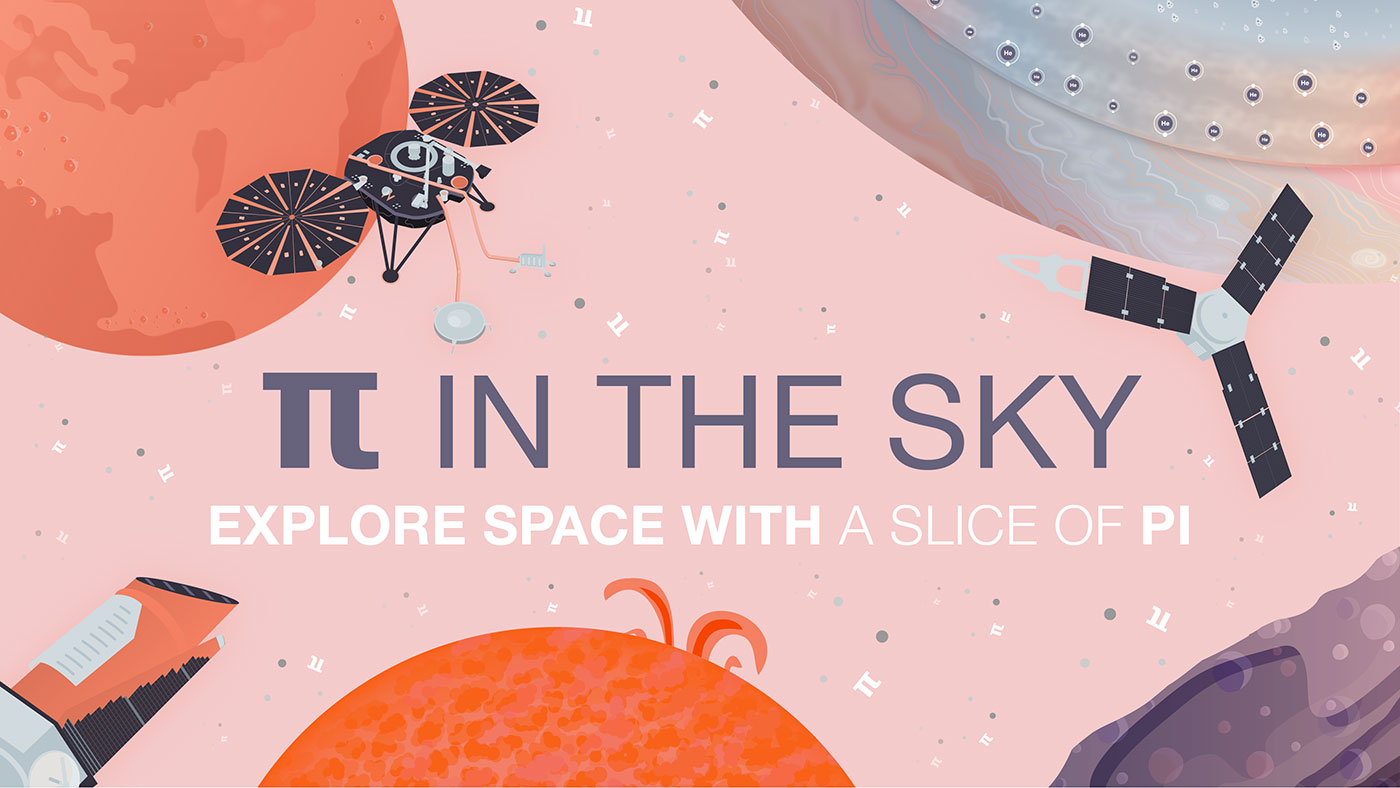Celebrate Pi Day 2018 with NASA's Tasty 'Pi in the Sky' Math Challenge

NASA is inviting the public to celebrate Pi Day (March 14) by sharing a series of cosmic calculations for kids and adults to solve.
The "Pi in the Sky" challenge was created by the Education Office of NASA's Jet Propulsion Laboratory (JPL) in Pasadena, California, and is now in its fifth year. The challenge will feature math problems to calculate for Martian earthquakes, helium rain on Jupiter and the rotation rate of the first interstellar visitor ever discovered, asteroid 'Oumuamua. The topics of last year's Pi Day challenge included craters with butterfly-shaped ejecta, or tossed material, and the total solar eclipse.
Pi is a number whose digits go on forever, but it's most popularly known by the first three: 3.14 (hence March 14). It is a mathematical constant often denoted by the symbol π. Pi comes in handy when determining the circumference or the surface area of a round celestial body. It also helps engineers and scientists program the precise orbits of satellites and spacecraft. such as the impressive pirouettes the Cassini spacecraft performed before its "death dive." [9 Surprising Facts About Pi]
Ota Lutz, a senior education specialist at JPL, believes everyone should attempt the Pi Day Challenge, even if they aren't familiar with these math tools. Students in grades 5 through 12 are especially invited to participate, and JPL offers resources for educators who want to use the math problems in their classrooms.
"All of the problems in the 'Pi in the Sky' challenge are real problems that JPL scientists and engineers solve using pi," Lutz said in a statement.
Solutions to the illustrated questions will be posted on March 15, according to NASA. Pi Daychallenge problems from previous years can be found on the website, too.
Follow Doris Elin Salazar on Twitter @salazar_elin. Follow us @Spacedotcom, Facebook and Google+. Original article on Space.com.
Get the Space.com Newsletter
Breaking space news, the latest updates on rocket launches, skywatching events and more!
Join our Space Forums to keep talking space on the latest missions, night sky and more! And if you have a news tip, correction or comment, let us know at: community@space.com.

Doris is a science journalist and Space.com contributor. She received a B.A. in Sociology and Communications at Fordham University in New York City. Her first work was published in collaboration with London Mining Network, where her love of science writing was born. Her passion for astronomy started as a kid when she helped her sister build a model solar system in the Bronx. She got her first shot at astronomy writing as a Space.com editorial intern and continues to write about all things cosmic for the website. Doris has also written about microscopic plant life for Scientific American’s website and about whale calls for their print magazine. She has also written about ancient humans for Inverse, with stories ranging from how to recreate Pompeii’s cuisine to how to map the Polynesian expansion through genomics. She currently shares her home with two rabbits. Follow her on twitter at @salazar_elin.









